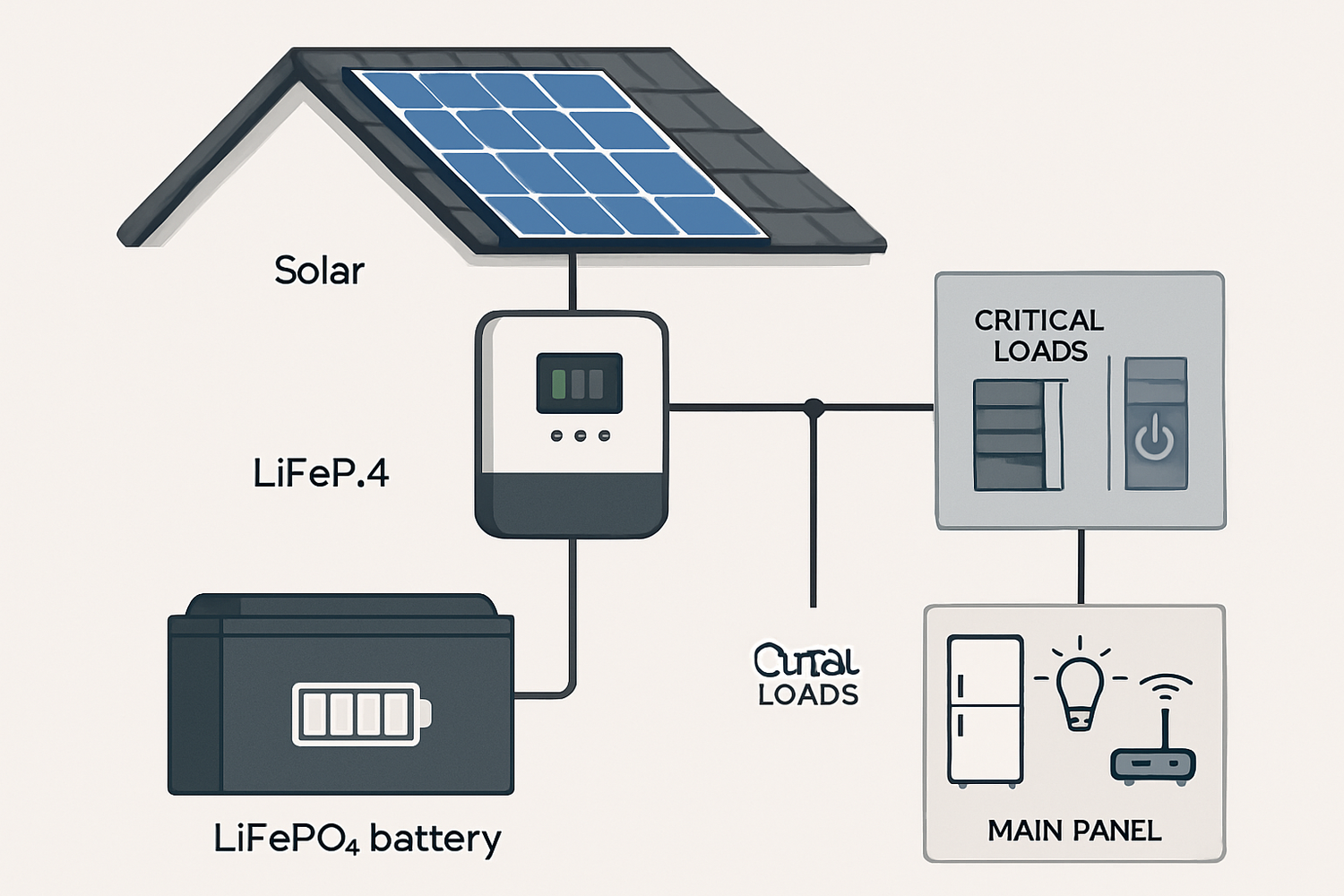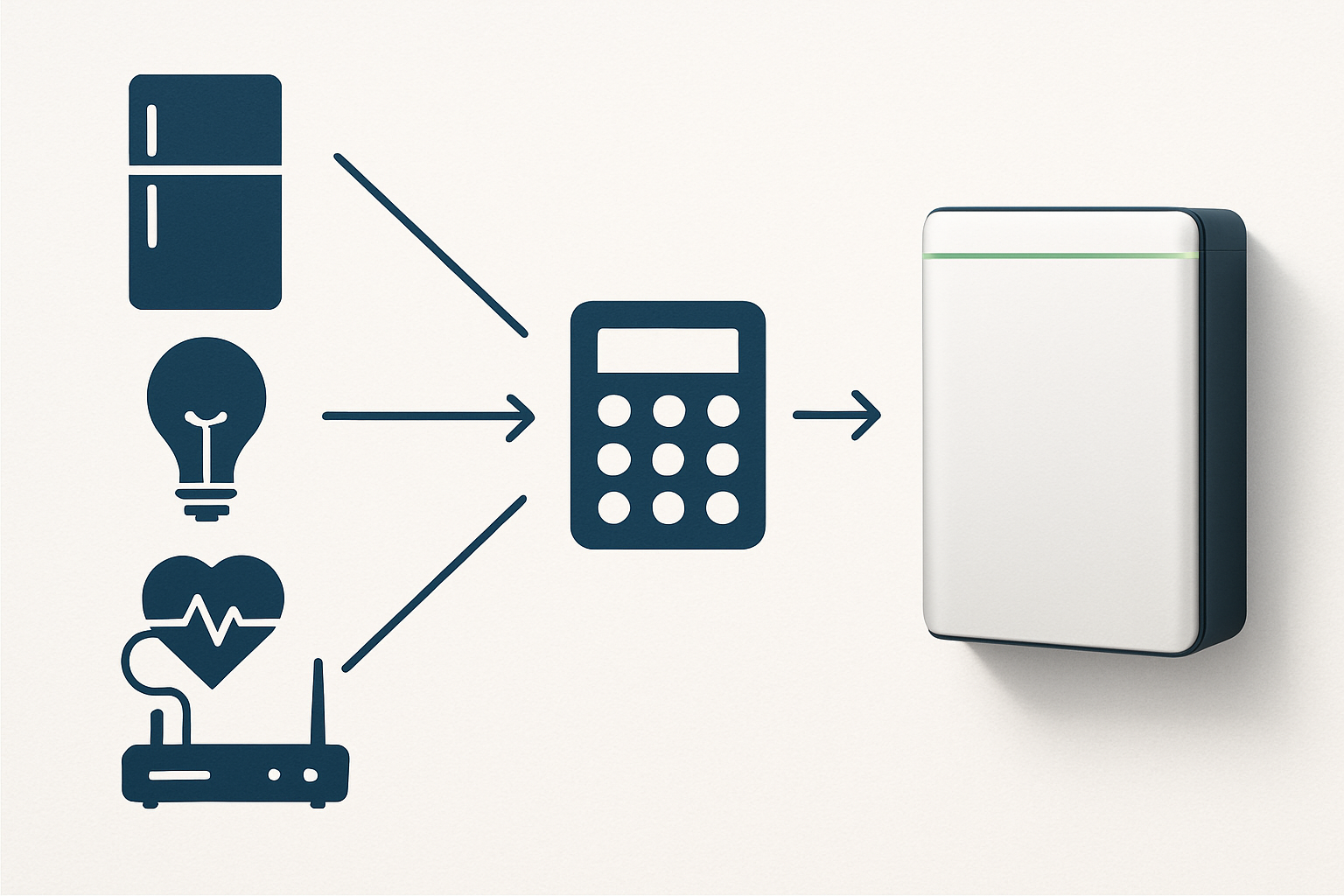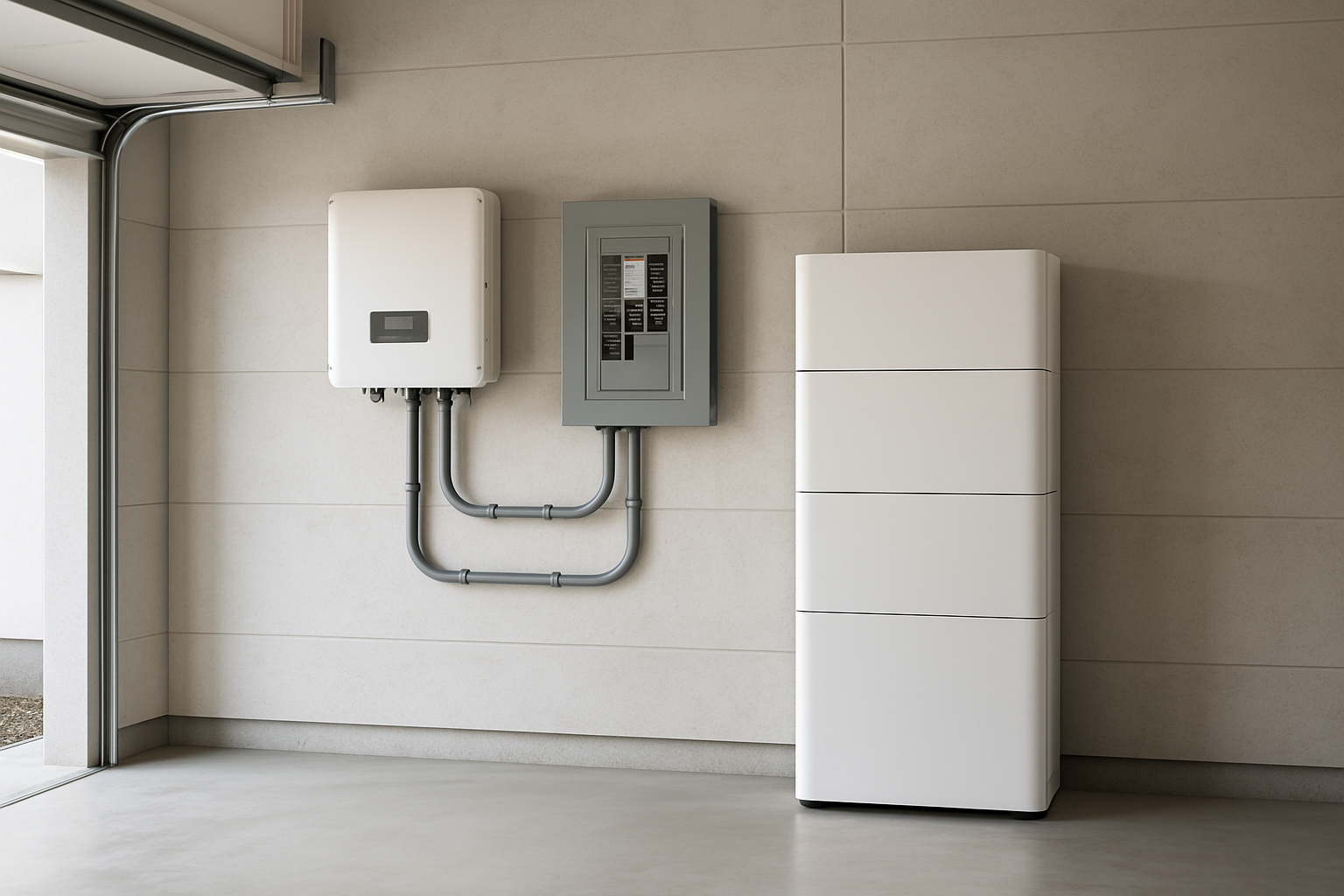When the power grid fails, a home battery system provides security and comfort. The central decision you face is not just about having backup power, but how much of your home you want to support. Choosing between a partial and a whole home backup determines the size, cost, and capability of your LiFePO4 energy storage system. This decision shapes your level of energy independence during an outage.
Understanding Your Power Needs: The Foundation of Sizing
Correctly sizing your LiFePO4 system begins with a clear picture of your electricity consumption. Before you can choose a battery, you must first audit your home's energy use. This step is crucial for designing a system that meets your expectations without overspending on unnecessary capacity.
Auditing Your Appliances: What's Truly Essential?
Start by listing all the appliances you intend to power during an outage. Group them into categories to prioritize what matters most. A typical breakdown includes:
- Critical Loads: These are non-negotiable items required for safety and basic living. Examples include your refrigerator, essential lighting, medical devices (like a CPAP machine), and your internet modem/router.
- Important Loads: These appliances add comfort and functionality. This category might include your home office equipment, a microwave, and a television.
- High-Demand Loads: These are powerful appliances that consume significant energy. Central air conditioning, electric water heaters, clothes dryers, and electric stoves fall into this group. Powering these often requires a whole home backup system.
Calculating Your Daily Energy Consumption (kWh)
Once you have your list, you need to calculate your total daily energy requirement. You can find the wattage (W) of an appliance on its label. The formula is straightforward:
(Appliance Wattage) x (Daily Hours of Use) = Daily Watt-hours (Wh)
Sum the Wh for all selected appliances and divide by 1,000 to get your total daily kilowatt-hours (kWh). This kWh figure is the primary metric for sizing your battery's capacity.
Sizing for a Partial Home Backup
A partial home backup system is a practical and cost-effective approach. It focuses on running only your most essential devices, ensuring you can navigate an outage safely and with minimal disruption to critical functions.
The 'Critical Loads' Approach
With a partial backup, you prioritize. For example, you might decide to power a refrigerator (150W for 24 hours, but cycling on/off for about 8 hours), a few LED lights (30W for 6 hours), and your internet equipment (15W for 24 hours). This would require approximately 1.74 kWh of energy per day. The main benefit is a significantly lower upfront investment in your LiFePO4 system capacity.
System Components for Partial Backup
This approach typically involves a smaller battery bank, often in the 5 kWh to 10 kWh range, paired with a solar inverter sized to handle the combined load of your chosen appliances. An electrician will usually install a separate sub-panel, often called a 'critical loads panel'. During an outage, this panel isolates and powers only the selected circuits, making the system efficient and straightforward.
Sizing for a Whole Home Backup
A whole home backup system offers the ultimate convenience: seamless, uninterrupted power to every circuit in your house. When the grid goes down, your life continues as normal. This solution is ideal for those who want to run large appliances like HVAC systems and electric stoves without compromise.
The 'Seamless Living' Approach
Powering an entire home demands a system designed for maximum load. This includes energy-intensive appliances that a partial system cannot support. The International Energy Agency's report, Next Generation Wind and Solar Power, highlights how installing battery storage systems with solar PV enhances energy self-consumption. A whole home system maximizes this benefit by capturing and storing enough solar energy to run everything.
Calculating for Maximum Load and Duration
A whole home backup requires a complete energy audit. The average U.S. home uses about 30 kWh per day. To power the entire house, you must also account for the high surge watts that appliances with motors, like air conditioners or well pumps, draw when they first turn on. Your solar power inverter must have a high enough surge rating to handle these initial power spikes.
System Requirements for Whole Home Power
These systems are substantially larger. You will likely need 20 kWh or more of LiFePO4 battery capacity. The solar power inverter for the home must also be powerful enough, often 10 kW or more, to manage the simultaneous operation of multiple high-demand appliances. The system integrates directly with your main electrical panel, automatically taking over when it detects a grid failure.
Key Factors Beyond Kilowatt-Hours
Sizing your system involves more than just calculating your daily kWh usage. Several other factors influence the performance and reliability of your LiFePO4 battery backup.
LiFePO4 Depth of Discharge (DoD) and Efficiency
LiFePO4 batteries have a distinct advantage over older technologies. They have a high Depth of Discharge (DoD), meaning you can safely use 80-95% of their total capacity. In contrast, traditional lead-acid batteries should only be discharged to about 50% to avoid damage. This means a 10 kWh LiFePO4 battery provides much more usable energy than a 10 kWh lead-acid battery. Furthermore, their high round-trip efficiency of over 95% ensures that very little energy is lost during charging and discharging. For a deeper analysis of these metrics, the ultimate reference on solar storage performance offers detailed data.
Autonomy: How Many Days Without Sun?
Consider how many days you want your system to last without any solar generation. For areas with frequent storms or unpredictable weather, planning for two to three days of autonomy is a common practice. To calculate this, simply multiply your daily energy needs by the number of desired autonomy days. For a partial backup needing 2 kWh per day, three days of autonomy would require a 6 kWh battery.
Scalability and Future-Proofing
Your energy needs may change over time. You might purchase an electric vehicle or add a new wing to your home. Many LiFePO4 energy storage systems are modular, allowing you to add more battery capacity later. This scalability lets you start with a smaller partial home backup system and expand it into a whole home solution as your budget and needs evolve.
A Practical Comparison: Partial vs. Whole Home
The choice between these two strategies involves clear trade-offs. The following table summarizes the key differences to help you decide.
| Feature | Partial Home Backup | Whole Home Backup |
|---|---|---|
| Upfront Cost | Lower | Significantly Higher |
| System Complexity | Moderate (requires sub-panel) | High (integrates with main panel) |
| Physical Footprint | Smaller | Larger |
| Appliances Powered | Essentials only (fridge, lights, outlets) | Entire home (including HVAC, stove) |
| Typical Battery Size | 5 - 10 kWh | 20 kWh+ |
| Best For | Budget-conscious users, essential needs | Maximum comfort, energy independence |
Final Considerations for Your System
Ultimately, the right LiFePO4 system size depends on your specific goals. A partial home backup provides a reliable safety net for critical needs at an accessible price point. A whole home backup delivers complete energy freedom and convenience. Assess your budget, identify your non-negotiable appliances, and consider your long-term energy goals. This will lead you to the perfect balance of resilience and investment.
Disclaimer: This information is for educational purposes. Sizing a home energy storage system involves many technical variables. We recommend consulting with a qualified professional for a detailed assessment of your specific needs. This content does not constitute financial or legal advice.
Frequently Asked Questions
How does a LiFePO4 battery's lifespan compare to other types?
LiFePO4 batteries offer a significantly longer lifespan, typically providing 4,000 to 6,000 charge cycles. In contrast, traditional lead-acid batteries may only last for a few hundred cycles. This exceptional durability makes LiFePO4 a more cost-effective solution over the life of the system.
Can I start with a partial backup system and upgrade later?
Yes, many modern LiFePO4 energy storage systems are designed to be modular. You can start with a smaller battery bank for critical loads and add more capacity later as your needs or budget grow. This scalability is a key advantage for future-proofing your investment.
What is more important: battery capacity (kWh) or power rating (kW)?
Both are critical for different reasons. Capacity (kWh) determines how long you can run your appliances, representing the total amount of stored energy. Power rating (kW) determines how many appliances you can run simultaneously, representing the maximum rate of energy delivery. A partial system can function with a lower kW rating, while a whole home system requires a high kW rating to handle large appliances.





Leave a comment
All comments are moderated before being published.
This site is protected by hCaptcha and the hCaptcha Privacy Policy and Terms of Service apply.